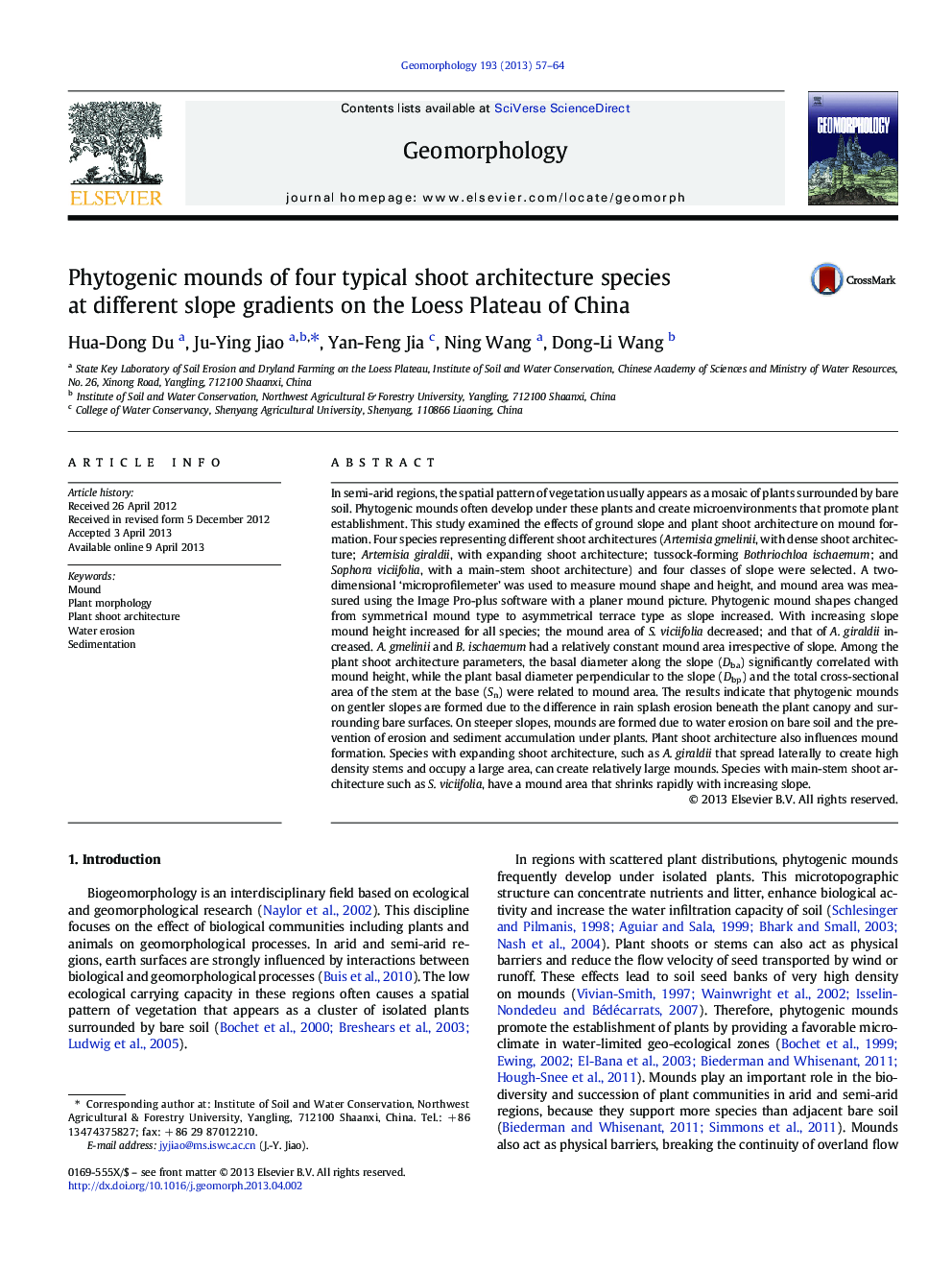| کد مقاله | کد نشریه | سال انتشار | مقاله انگلیسی | نسخه تمام متن |
|---|---|---|---|---|
| 4684876 | 1635456 | 2013 | 8 صفحه PDF | دانلود رایگان |
• Mound formation in studied region is by soil erosion and sedimentation.
• Mound shape changed from mound-type into terrace-type as slope increased.
• Plant canopy size and shoot number influence phytogenic mound shape and size.
• Expanding shoot architecture species is effective to mound formation.
In semi-arid regions, the spatial pattern of vegetation usually appears as a mosaic of plants surrounded by bare soil. Phytogenic mounds often develop under these plants and create microenvironments that promote plant establishment. This study examined the effects of ground slope and plant shoot architecture on mound formation. Four species representing different shoot architectures (Artemisia gmelinii, with dense shoot architecture; Artemisia giraldii, with expanding shoot architecture; tussock-forming Bothriochloa ischaemum; and Sophora viciifolia, with a main-stem shoot architecture) and four classes of slope were selected. A two-dimensional ‘microprofilemeter’ was used to measure mound shape and height, and mound area was measured using the Image Pro-plus software with a planer mound picture. Phytogenic mound shapes changed from symmetrical mound type to asymmetrical terrace type as slope increased. With increasing slope mound height increased for all species; the mound area of S. viciifolia decreased; and that of A. giraldii increased. A. gmelinii and B. ischaemum had a relatively constant mound area irrespective of slope. Among the plant shoot architecture parameters, the basal diameter along the slope (Dba) significantly correlated with mound height, while the plant basal diameter perpendicular to the slope (Dbp) and the total cross-sectional area of the stem at the base (Sn) were related to mound area. The results indicate that phytogenic mounds on gentler slopes are formed due to the difference in rain splash erosion beneath the plant canopy and surrounding bare surfaces. On steeper slopes, mounds are formed due to water erosion on bare soil and the prevention of erosion and sediment accumulation under plants. Plant shoot architecture also influences mound formation. Species with expanding shoot architecture, such as A. giraldii that spread laterally to create high density stems and occupy a large area, can create relatively large mounds. Species with main-stem shoot architecture such as S. viciifolia, have a mound area that shrinks rapidly with increasing slope.
Journal: Geomorphology - Volume 193, 1 July 2013, Pages 57–64
